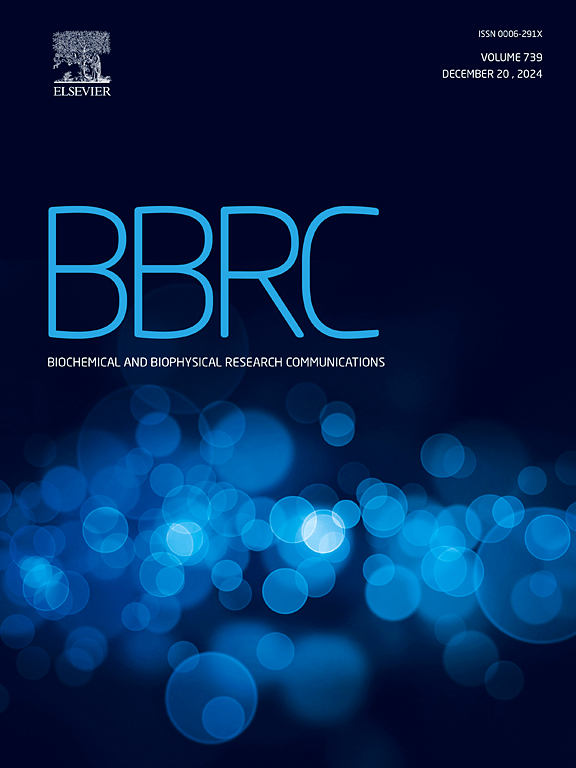Methuselah proteins in Drosophila: Structural and evolutionary insights from mathematical genomics
IF 2.5
3区 生物学
Q3 BIOCHEMISTRY & MOLECULAR BIOLOGY
Biochemical and biophysical research communications
Pub Date : 2025-06-20
DOI:10.1016/j.bbrc.2025.152240
引用次数: 0
Abstract
This study provides a quantitative and comprehensive analysis of 18 Methuselah (mth) protein variants from fruit flies, which are part of the G-protein-coupled receptor (GPCR) family and are implicated in aging and longevity. Phylogenetic analysis identified two major clades of mth proteins, with the first clade indicating conserved functions across Drosophila species and the second clade reflecting gene duplication and diversification. The study found five distinct functional subclasses of mth proteins through amino acid frequency and poly-string analyses, linked to their structural diversity and role in longevity. Structural topology and post-translational modifications reveal similarities with G-protein-coupled receptors (GPCRs), suggesting that mth proteins are crucial for signal transduction and cellular health. Variability in propeptide cleavage sites and intrinsic protein disorder further highlight adaptive roles in signaling. The findings underscore the importance of a quantitative approach to studying Methuselah genes, offering insights into their functional versatility and evolutionary dynamics. This enhanced quantitative understanding contributes to advancing research on aging and longevity.
果蝇中的玛土撒拉蛋白:来自数学基因组学的结构和进化见解
本研究对来自果蝇的18个玛土撒拉(mth)蛋白变异进行了定量和全面的分析,这些变异是g蛋白偶联受体(GPCR)家族的一部分,与衰老和长寿有关。系统发育分析确定了mth蛋白的两个主要进化支,第一个进化支表明在果蝇物种中具有保守功能,第二个进化支反映了基因复制和多样化。该研究通过氨基酸频率和多链分析发现了mth蛋白的五个不同功能亚类,这些亚类与它们的结构多样性和在长寿中的作用有关。结构拓扑和翻译后修饰揭示了与g蛋白偶联受体(gpcr)的相似性,这表明m蛋白对信号转导和细胞健康至关重要。前肽切割位点的可变性和内在蛋白紊乱进一步突出了信号传导中的适应性作用。这些发现强调了研究玛土撒拉基因的定量方法的重要性,为他们的功能多样性和进化动力学提供了见解。这种增强的定量理解有助于推进衰老和长寿的研究。
本文章由计算机程序翻译,如有差异,请以英文原文为准。
求助全文
约1分钟内获得全文
求助全文
来源期刊
CiteScore
6.10
自引率
0.00%
发文量
1400
审稿时长
14 days
期刊介绍:
Biochemical and Biophysical Research Communications is the premier international journal devoted to the very rapid dissemination of timely and significant experimental results in diverse fields of biological research. The development of the "Breakthroughs and Views" section brings the minireview format to the journal, and issues often contain collections of special interest manuscripts. BBRC is published weekly (52 issues/year).Research Areas now include: Biochemistry; biophysics; cell biology; developmental biology; immunology
; molecular biology; neurobiology; plant biology and proteomics

 求助内容:
求助内容: 应助结果提醒方式:
应助结果提醒方式:


